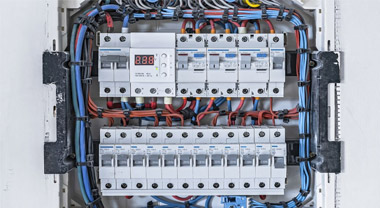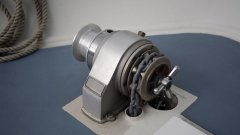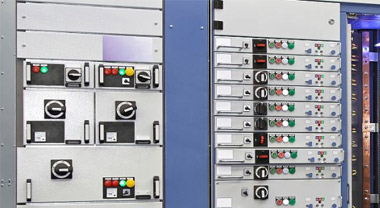Analysis of important technical problems in power supply and distribution system of civil buildings
01. Classification and fire resistance rating of single and multi-storey buildings
Single and multi-storey residential buildings:
Residential buildings with building height not more than 27m (including residential buildings with commercial service outlets)
Single and multi-storey public buildings:
1. Single storey public buildings with building height greater than 24m.
2. Other public buildings with building height no more than 24m.
Fire resistance rating of single and multi-storey buildings:
The fire resistance rating of single and multi-storey important public buildings shall not be lower than grade II.
02. Load classification of single and multi-storey buildings
The fire protection power of the following single and multi-storey buildings shall be supplied according to the secondary load:
- 1. Cinemas and theatres with more than 1500 seats and gymnasiums with more than 3000 seats,
- 2. The building area of any floor is more than 3000m ² Stores and exhibition buildings,
- 3. Provincial (municipal) level and above radio and television, telecommunications, finance and trade financial buildings,
- 4. Other public buildings with outdoor fire water consumption greater than 25L / s.
Note: refer to Appendix A of JGJ 16-2008 for classification of other non fire power loads.
03. Classification and fire prevention registration of high-rise buildings
Class I high-rise residential buildings:
Residential buildings with a building height of more than 54m (including residential buildings with commercial service outlets).
Class II high-rise residential buildings:
Residential buildings with a building height of more than 27m but not more than 54m (including residential buildings with commercial service outlets)
Class I high-rise public buildings:
- 1. Public buildings with building height greater than 50m;
- 2. Shops, exhibitions, telecommunications, postal, finance and trade buildings and other multi-functional buildings with a building area of more than 1000 m2 on any floor above 24m in height;
- 3. Medical buildings and important public buildings;
- 4. Radio and television and Disaster Prevention Command and dispatching buildings at provincial level and above, network bureau level and provincial power dispatching buildings;
- 5. Libraries and libraries with more than 1 million books.
Class II high-rise public buildings:
Other high-rise public buildings except class I high-rise public buildings (the building height is more than 24m).
Note:
(1) The fire protection requirements of non residential residential buildings such as dormitories and apartments shall be implemented in accordance with the provisions of public buildings;
(2) The fire protection requirements of the podium shall be in accordance with the provisions of high-rise civil buildings.
Fire resistance rating of high-rise buildings:
1. The fire resistance rating of class I high-rise buildings, underground or semi underground buildings (rooms) shall not be lower than class I;
2. The fire resistance rating of class II high-rise buildings shall not be lower than class II.
04. Load grade of high-rise buildings
Load classification of fire power in high-rise buildings:
Level I load: fire control room, automatic fire alarm and linkage control device, fire emergency lighting and evacuation indicator, smoke control and smoke exhaust facilities, automatic fire extinguishing system, fire pump, fire elevator and its drainage pump, electric fire roller shutter, door and window and valve of class I high-rise building;
Class II load: the above-mentioned fire-fighting power in class II high-rise buildings.
Note: According to technical code for fire water supply and hydrant system (gb50974-2014)
Article 9.2.1: fire fighting and drainage measures shall be taken for the following buildings and places:
(1) Fire pump room;
(2) Basement with fire water supply system (such as underground garage);
(3) The shaft bottom of the fire elevator;
(4) Warehouse.
That is, the sewage pump in the above places belongs to "fire load" and shall be graded, supplied and distributed according to the requirements of "fire load".
Load classification of non fire power in high-rise buildings:
Class I load: power for walkway lighting, duty lighting, guard lighting and obstacle lighting of class I high-rise buildings, power for main business and computer system, power for security system, power for electronic information equipment room, power for passenger elevator, power for sewage pump and domestic water pump;
Class II load: power for lighting of main passageways and staircases of class II high-rise buildings, power for passenger elevators, power for sewage pumps and domestic water pumps.
05. Power supply requirements for class I and II loads
- 1. Class I load shall be powered by dual power supply; When one power supply fails, the other power supply shall not be damaged at the same time (strong bar).
- 2. For the particularly important loads in class I loads, in addition to the dual power supply, the emergency power supply shall be added, and it is strictly prohibited to connect other loads to the emergency power supply system (mandatory).
- 3. The power supply system of class II load should be powered by two circuits. When the load is small or the regional power supply conditions are difficult, the secondary load can be supplied by the dedicated overhead line or cable of 6kV and above in the primary circuit.
- 4. Measures to prevent parallel operation must be taken between emergency power supply and normal power supply (strong bar).
- 5. The load of standby power supply shall not be connected to the emergency power supply system (strong bar)
06. Power distribution system of star delta step-down starting motor
For the power distribution system diagram of star delta step-down starting motor, the cables, contactors, thermal relays and other equipment in the power supply circuit shall be selected according to 1 / √ 3 (i.e. 0.58 IR) of the rated current of the motor.
07. Dual purpose dual speed fan power distribution system for peacetime / fire
Power distribution system diagram of dual-purpose dual-speed fan in peacetime / fire, analysis:
- 1. At normal low speed: KM1 is closed, km2 and KM3 are disconnected, and kh1 is disconnected under overload. In case of high-speed fire: both km2 and KM3 are closed, while KM1 is disconnected. In case of overload, KH2 only emits audible and visual alarm signals and does not open.
- 2. The third contactor KM3: normally open, and close in case of fire for short circuit.
- 3. The power supply phase line used for low-speed operation of the motor at ordinary times is short circuited in case of fire, so it should also be considered in case of fire operation. Fire resistant cable or mineral insulated cable must be used.
- 4. The incoming motor shall have 7 wires, i.e. 3-phase wire + 3-phase wire + 1 Common PE wire.
- 5. The common PE line shall be selected according to the corresponding large section phase line conditions and fire resistance requirements during fire operation.
- 6. The current of switches and components used in peacetime / fire shall be selected separately, otherwise the current and cross section are not matched.
- 7. Power supply lines in peacetime and fire shall be laid separately through pipes.
- 8. The correct page number of the control schematic diagram adopted shall be noted carefully according to 16d303-2 control circuit diagram of common fans (old atlas, manufacturer's Atlas and blind page marking are not allowed)
08. Fire motor distribution system
For the fire motor power distribution system diagram, the analysis is as follows:
1. The distribution protection outgoing switch of the fire motor shall be of single electromagnetic type, that is, the conventional thermal magnetic composite type shall not be selected, and the thermal release shall be canceled to realize no tripping when the motor is overloaded;
2. As for the dual power incoming switch ATSE and its superior switch of the fire motor, these switches belong to the "protection of the fire protection line". As for the line only, the fire load is constant and "the line cannot be overloaded", it does not matter whether these switches are set or canceled with "overload protection" (according to code for design of low voltage power distribution gb50054-2011: 6.3.5).
Generally, if the overload long delay setting current value IZD of these switches is ≥ 1.5 ~ 2 times of the rated current ie of the motor, they will not trip when the end motor is overloaded.
There is no doubt that the protection of the fire motor has been completed by the circuit breaker and thermal relay in the control box of the fire motor, and they can only implement the "protection of the motor"! At this time, as mentioned above, the circuit breaker shall be of single electromagnetic type, and the thermal relay shall only alarm without tripping when overload.
09. Distribution of fire motor with one for use and one for standby
The commonly used fire-fighting motor (fan, water pump) shall trip in case of overload! When the standby fire-fighting motor is overloaded, it only gives an alarm without tripping and insists on working.
10. Power supply of motor control circuit
Its reliability shall not be lower than that of the main circuit power supply. Multiple working pumps and standby pumps cannot share one control power supply.
11. Setting of motor control box
Motor control box (control button or control switch):
It should be located near the motor for easy operation and observation. Otherwise, the remote control box should be equipped with light off signal or instrument indicating the working state of the motor.
12. Setting of motor control box
55kW and above motor: current measuring device shall be installed.
13. Local control of motor and release of remote control
Design measures and technical measures for "local manual control on site and remote control release" of motor:
1. The on-site control box is provided with manual control start / stop button. The "isolation switch" is directly added to the primary main circuit to cut off the primary main power supply and release the remote control;
2. The field control box adds a "change-over switch" in the secondary control circuit. By setting the "local" or "0" neutral position, the power supply of the secondary control circuit is cut off, so that the coil of the AC contactor cannot be powered on, and the contact of the primary circuit is disconnected, thus cutting off the primary main power supply and releasing the remote automatic control.
14. Power distribution requirements for electrical equipment in wet places or outdoor places
Power distribution of electrical equipment in wet places such as drainage pumps or outdoor places:
1. Ground fault protection (CPS with RCD protection and 30mA action) shall be adopted for all kinds of drainage pumps, including the fire pump house and fire elevator foundation pit drainage pump for fire protection, which shall be established at the same time as the "standby pump only alarms but does not trip" of the fire drainage pump.
2. Socket, bathroom shower, roof fan, solar hot water pump, air conditioner outdoor unit; The distribution circuit of landscape lighting, facade lighting, festival lights, aviation obstacle lights, etc. shall be equipped with residual current action protection device (RCD) with an action current of 30mA.
15. Schematic diagram of secondary control of motor power distribution
For wiring system diagram of motor distribution box:
In addition to the primary main circuit diagram, the design drawing shall also draw the secondary control schematic diagram of the motor (fan, water pump), or "mark" the national standard atlas number, corresponding page number, necessary instructions, etc., and the page number shall be marked accurately.
16. Motor short circuit protection and ground fault protection
AC motor shall be equipped with short-circuit protection and ground fault protection
17. Motor overload protection
- 1. Overload protection shall be installed for motors that are easy to overload during operation, and motors that are difficult to start or self start and require limited starting time.
- 2. The motor running continuously should be equipped with overload protection, which should act to disconnect the power supply.
- 3. When the loss caused by power failure is greater than that caused by overload, the overload protection shall act on the signal.
18. Protection of low-voltage distribution line
Floor distribution box with trunk power distribution:
The power incoming line is led out from the branch of the main line. When the line length is l > 3M, protective appliances shall be set at the branch to protect the branch line;
Or the branch line shall have the same section as the main line to ensure that the branch line can be protected by the main switch of the main line in case of short circuit.
19. Parameter selection of load calculation
During load calculation, the parameters such as demand coefficient KX, active simultaneous coefficient K Σ P = 0.8 ~ 0.9, reactive simultaneous coefficient K Σ q = 0.93 ~ 0.97 and power factor cos ¢ shall be correctly selected.
common problem:
1. The demand coefficient KX is larger;
2. The simultaneous coefficient of active and reactive power is unreasonable;
3. The power factor cos ¢ is smaller.
20. Load calculation example
For lighting and power loads with different power factor cos Ø, when the distribution cabinet (box) is shared, the current of the incoming line of the power supply shall be calculated by the simultaneous coefficient method according to the apparent capacity (active power and reactive power are separately counted).
21. Special power supply circuit shall be adopted for fire protection electrical equipment
- 1. Special (i.e. separate) power supply circuit must be used for fire protection electrical equipment, and cannot share the circuit with other lighting, power, air conditioning, etc.
- 2. When the non fire power supply line is cut off in case of fire, the fire power supply and line shall not be affected.
- 3. Whether it is a multi-storey building or a high-rise building, the fire-fighting electrical equipment in the building shall adopt a special power supply circuit. Because the fire-fighting equipment only has reliable power supply, and the distribution line is unreliable, it still cannot guarantee the safe power supply of the fire-fighting electrical equipment.
22. Special power supply circuit shall be adopted for fire protection electrical equipment
For power supply of fire control room, fire pump, fire elevator, smoke exhaust fan, etc., automatic switching device shall be set at the last level distribution box.
23. Separate power supply according to different load categories and classifications
Power supply trunk lines and distribution boxes shall be set according to different load categories.
24. Separate power supply according to the requirements of itemized measurement
1. From the substation to the single building, the main incoming line of power supply: according to the requirements of itemized measurement, it shall be separated according to the classification of lighting, power, air conditioning, special power consumption, etc., and the power supply trunk line and distribution box shall be set respectively for management and billing.
2. Products with remote transmission function shall be selected for classified and itemized energy metering devices to facilitate the setting of independent energy management system and networking with building equipment management system (BA) to realize data sharing.
25. Separate power supply according to the requirements of itemized measurement
The main incoming line of power supply shall be provided with electrical appliances with isolation and protection functions.
26. Low voltage distribution level shall not exceed three levels
The power supply and distribution system shall be simple and reliable. The distribution level of the same voltage level shall not be more than two levels for high voltage and three levels for low voltage.
27. Selection range of four level switch
The selection range of four pole switch is as follows:
- 1. The power transfer switch in TN-C-S and TN-S systems shall be a four pole switch.
- 2. The power transfer switch between the normal power supply and the standby generator power supply system shall be a four pole switch.
- 3. The power transfer switch between IT system with neutral conductor and TT system or TN system shall adopt four pole switch.
- 4. The power incoming switch of TT system shall be a four pole switch.
- 5. When there is neutral conductor in it system, four pole switch shall be adopted.
- 6. When the residual current action protection apparatus is selected, except that in TN-S system, the neutral conductor can be continuously disconnected when it is at reliable ground potential, the protection apparatus that can disconnect all live conductors of the protected circuit shall be used.
- 7. The main power switch of each house shall be a switching device that can simultaneously disconnect the phase line and the neutral line.
In addition to the above provisions, three pole switches shall be used in principle if there are no special requirements.
28. Main differences between PC level and CB level ATSE
The main differences between automatic transfer switch (ATSE) PC level and CB level are:
1. CB level ATSE can break short-circuit current, but PC level can not;
2. The conversion time of PC level ATSE is about 0.1s, and that of CB level ATSE is 1-3s.
29. Selection of rated current of PC level ATSE
The rated current of PC level ATSE shall not be less than 125% of the loop calculation current.
30. ATSE should have maintenance isolation function
The incoming line side of automatic transfer switch (ATSE) should not be equipped with isolating switch or circuit breaker.
31. Inter stage selective linkage technology
The inter stage selective interlocking technology is adopted to ensure the selectivity of the upper and lower switches in case of short-circuit fault, so as to effectively solve the problem of large-scale power failure caused by skip tripping.




